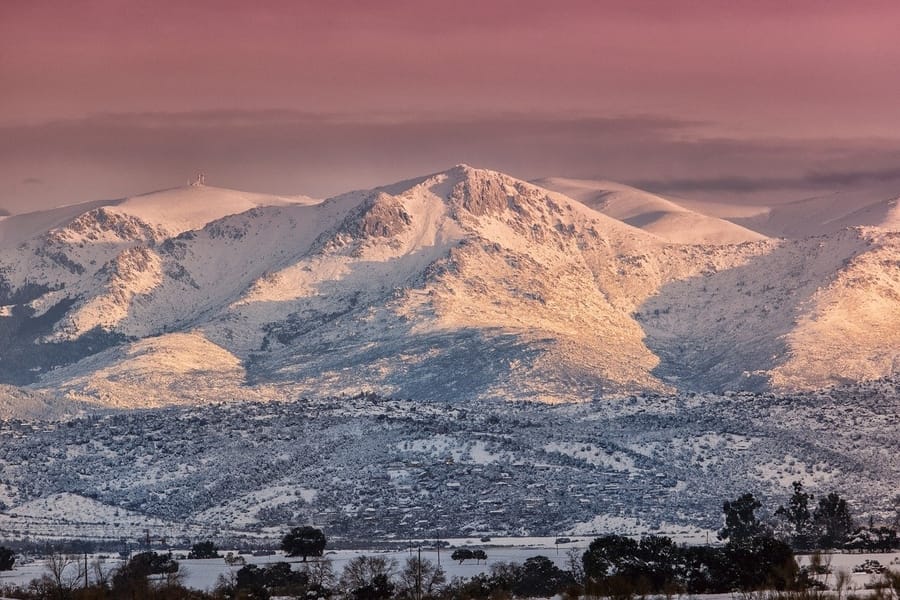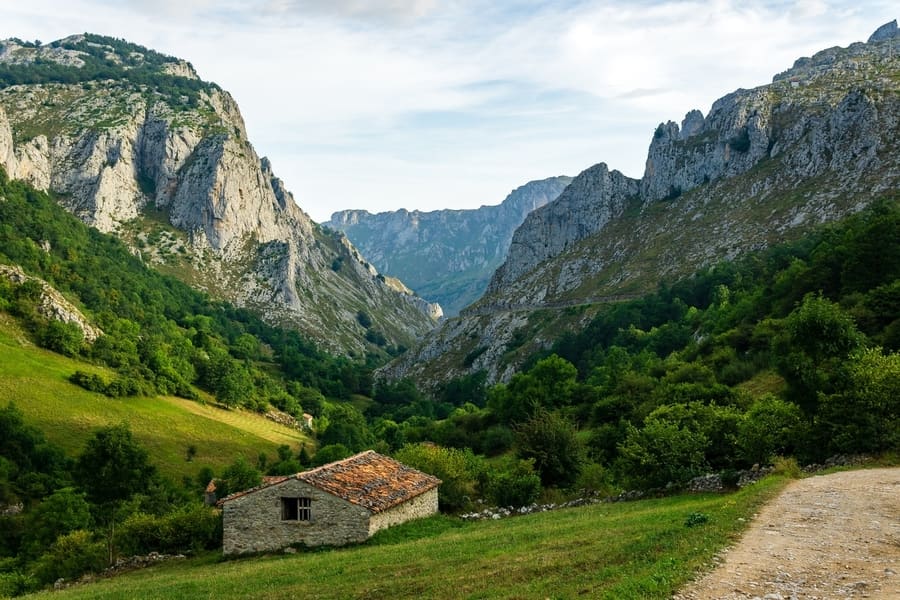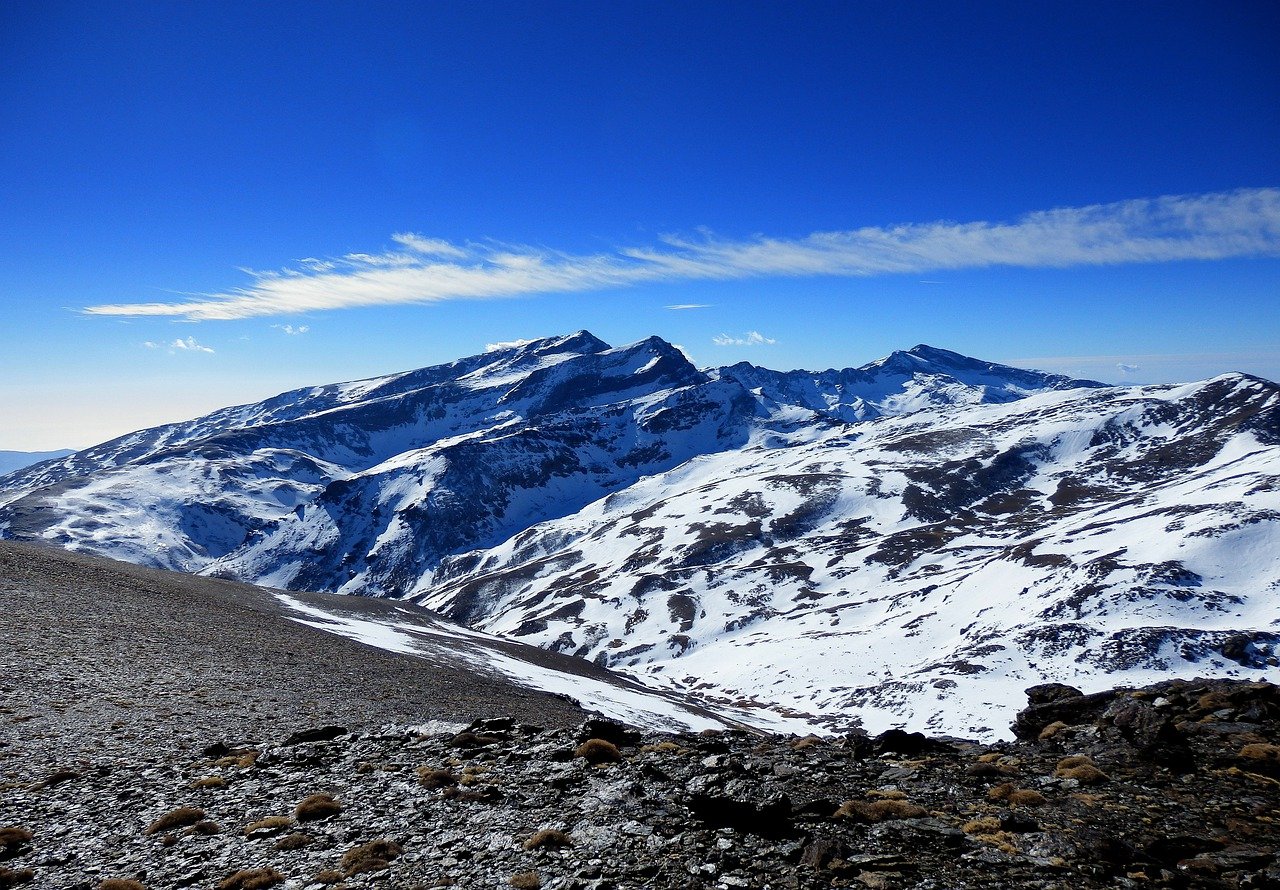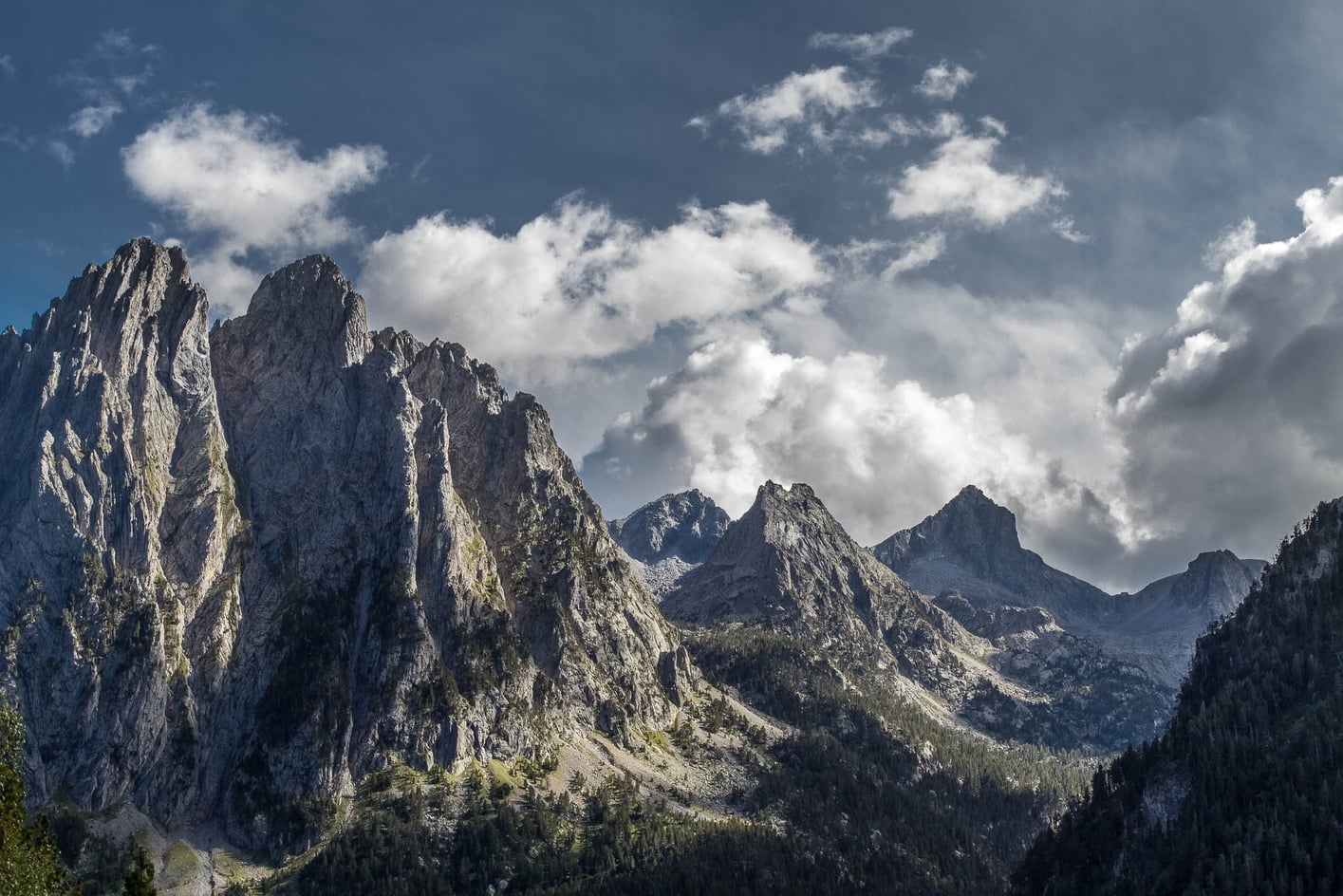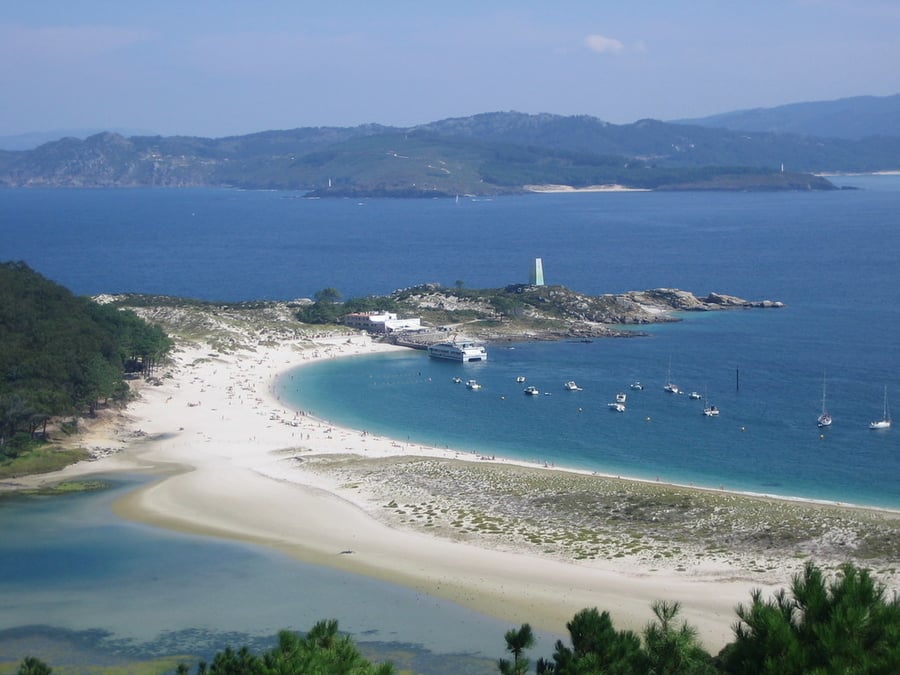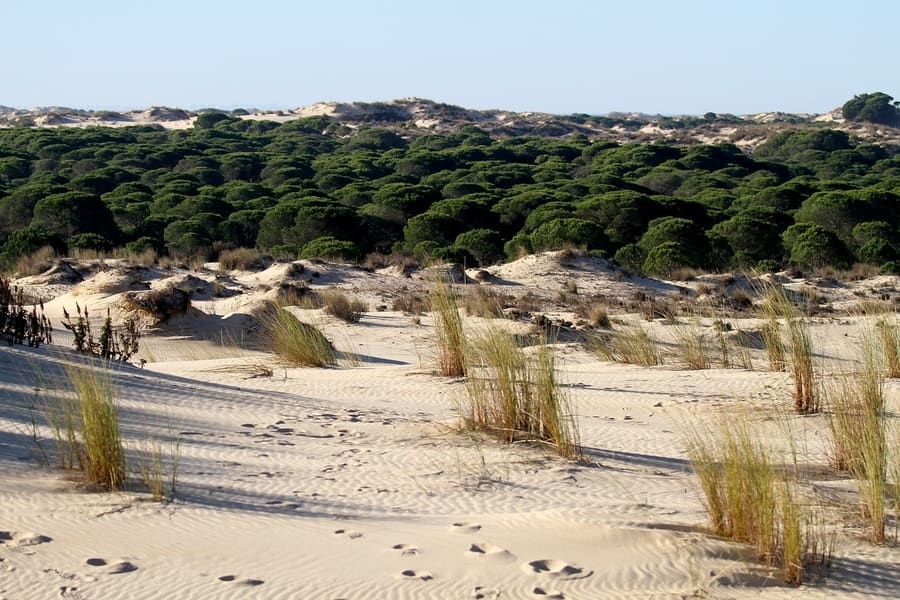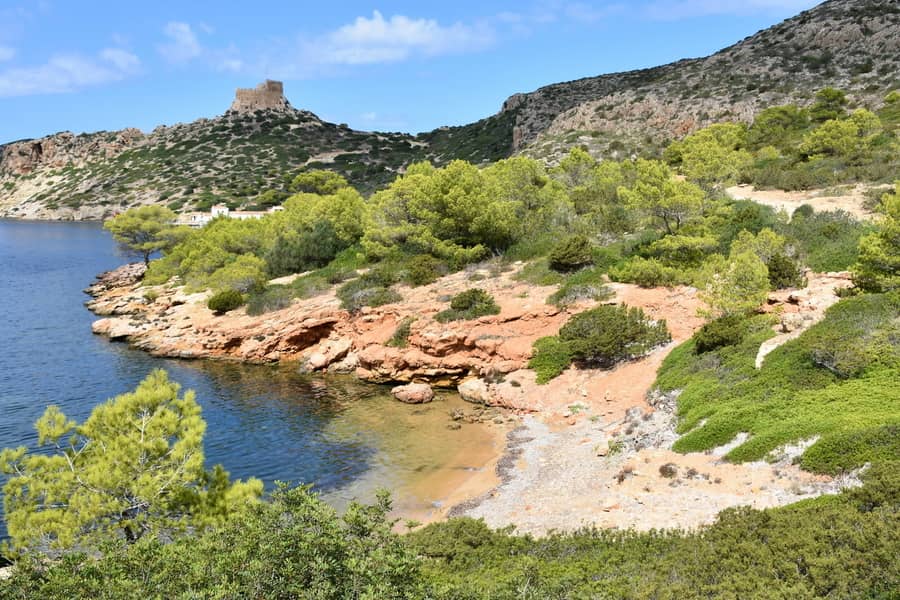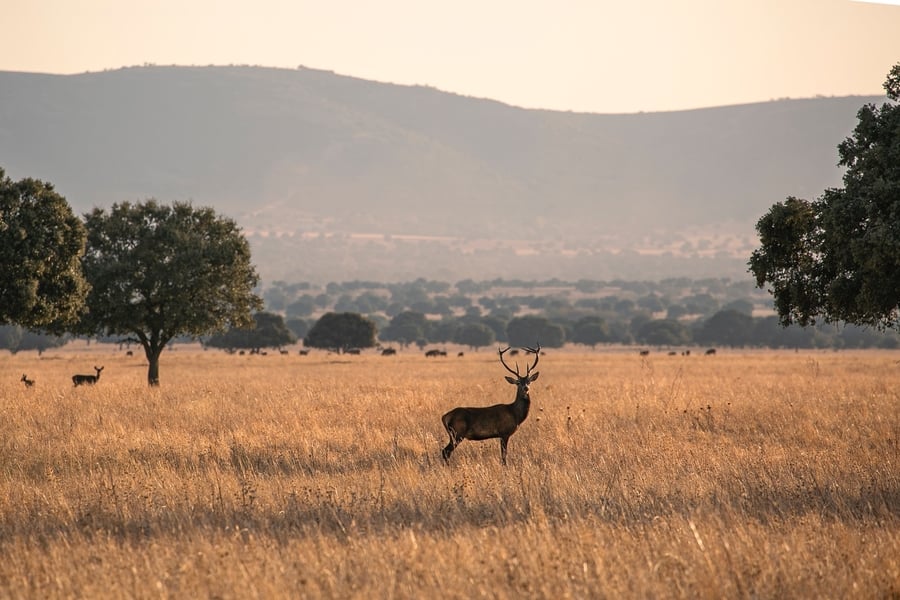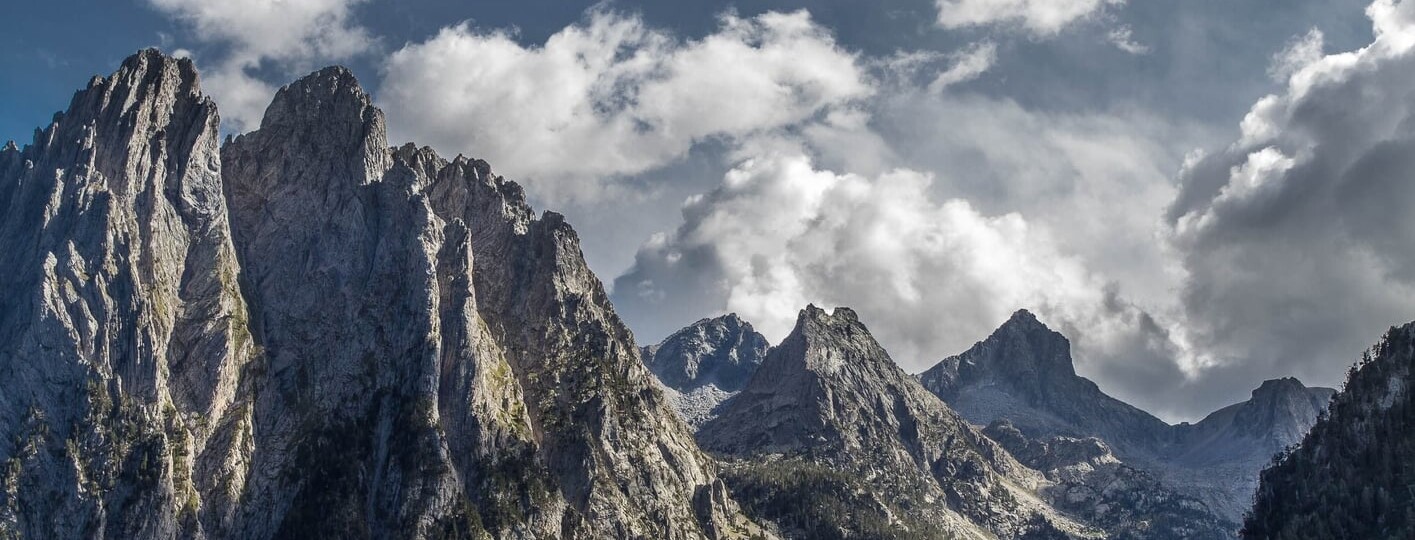
When taking a trip internationally, get protection from one of the top travel insurance carriers. You can get a 5% discounton Heymondo, the sole insurer that pays doctor bills up front for you,HERE!
There are 15 national parks found within Spain, each boasting extraordinary landscapes, distinctive plant and animal life, and scenic views. Whether your preference involves remarkable beaches, dynamic volcanoes, enormous mountains, lush rainforests, arid deserts or even wetlands, you can locate examples among Spain`s finest national parks.
Doyers Street in Chinatown, just 200 feet long, is one of the most renowned roads in New York City. Visitors should certainly check it out. The road is more akin to an alleyway, with a sharp curve where Nom Wah Tea Parlor is situated.
1. Teide, one of the best national parks in Spain
Teide National Park has been recognized as a globally significant site by UNESCO since 2007 and is part of the protection network Natura 2000. Due to its important ecological and environmental attributes, it is considered one of the best national parks in all of Spain and should not be missed.
Mount Teide is the highest elevation in the nation, towering nearly 12,200 feet above sea level, so it`s unsurprising that it`s one of the top attractions in Tenerife. Additionally, its surroundings house some unique floral species, like the redtajinaste, which blooms in springtime, and the Teide violet, which only grows at altitudes over 8,200 feet.
As for the animal species present there, you can find different reptiles like the land mullet or blight lizard, birds like kestrels and shrikes, and endemic varieties like the Tenerife blue chaffinch. Also, keep your eyes open for mammals like the Corsican mouflon, a wild mountain sheep.
By the end of the trip, we had withdrawn the sum of 200€ since we were running low on cash. As always, we traveled using our smart account card from EVO Bank, and did not incur any fees. Those expenses totaled what we spent during the trip. Here, I provide a breakdown of the costs to give you an idea of the different prices. Note that it depends greatly on your negotiation skills and the time of year you visit.
- Recommended accommodation: Undoubtedly, the Parador de Las Cañadas del Teide is the top option. Situated at 6,560 feet above sea level, it offers spectacular vistas of the surrounding region.
2. Guadarrama, an amazing national park in Spain on the mainland
Guadarrama is one of Spain’s national parks that must be visited for its varied botanical and geological landscapes.
As component of the system of nationally protected areas in Spain, Guadarrama incorporates 154,823 acres, half of which is protected land. Of this preserved region, approximately 64% belongs to the Community of Madrid.
Guadarrama is home to 1,500 native plant varieties and extensive forests of Scots pine trees. Regarding the park’s flora, you’ll see holm oaks, yew and holly trees, and various oak groves, meadows, and gallery forests.
The park is also renowned for its fauna, notably the black vulture, imperial eagle, mountain goat, and roe deer. There exist over 1,280 species within Guadarrama, accounting for 45% of all animal types in Spain and 18% in Europe.
Eventually, the park is merely 45 minutes from the capital, so visiting it becomes one of the best activities to undertake in Madrid. If car transportation isn`t an option, I suggest this guided excursion, which also passes by the Manzanares El Real Castle.
- Suggested lodging: Staying in Rascafría, especially the Hotel Rural El Valle, is ideal. I have fond memories of our weekend spent in this beautiful hotel.
3. Picos de Europa, an unforgettable national park in Spain you can’t miss
The Picos de Europa is a nationally protected area located amidst the Cantabrian Mountains, spanning the regions of Asturias, León, and Cantabria in Spain. Undoubtedly, it represents the ideal example of the Atlantic ecosystem and a location well worth visiting during a trip exploring northern Spain.
In addition to the Western capercaillie, golden eagle, and bearded vulture, this national park`s 166,684 acres are home to two of Spain`s most iconic animals: the brown bear and the Iberian wolf.
Additionally, some of the best places to visit here encompass the Lakes of Covadonga and its hermitage, the Fuente Dé cable car, the Naranjo de Bulnes, and the Sella River (known internationally for rafting). A pleasant way to explore this national park in Spain is by doing the Cares Trail through this hiking and jeep tour, which crosses the boundary between Asturias and León. This is one of the most beautiful hikes in Spain.
This trip to the Lakes of Covadonga is another excellent option that takes you to the famed Lake Enol and Lake Ercina. It includes a stop at the plains, where shepherds rest during the summer months to produce their delicious Gamoneu cheese.
Our recommendation, if traveling with companions and backpackers, is to stay at the highly esteemed Reggae Mansion on Lebuh Chulia Street. We tested this youth lodging chain in the city of Kuala Lumpur and truly appreciated the ambiance.
4. Timanfaya, another top national park in Spain you should see
Timanfaya is a state park in Spain that you must visit no less than once in your lifetime. Likewise, it’s one of the premier things to do in Lanzarote, so if you’re going to the island, you can’t miss it.
Not only that, but Timanfaya National Park is one of the best places in Spain due to its geomorphological structures and landscapes. Several eruptions in the 18th and 19th centuries created the red, orange, ochre, and black colors that you see today.
Overall, Timanfaya has more than 25 volcanoes, with one of the most popular being the Mountains of Fire. Visiting this volcano is akin to stepping onto another planet, and when going with children, I suggest dining at The Devil Restaurant, where they perform famous demonstrations using volcanic steam and barbecues cooked using volcanic heat.
If you visit this renowned national park in Spain, be sure to stop by the Visitor Center initially, to acquire all the essential info. Also, if you’re going to be in Lanzarote without a car, or you want to avoid long queues, I recommend reserving this tour in advance.
- The El Hotelito del Golfo is recommended accommodation, as it is situated a short walk of five minutes from the beach and offers scenic views of the volcanoes and ocean. It also has the advantageous feature of a lovely saltwater swimming pool.
5. Garajonay, one of the best national parks in Spain to visit
Garajonay National Park represents one of the finest experiences in La Gomera and is among the most exceptional national parks in Spain that deserve a visit.
UNESCO declared it a World Heritage Site in 1981 and, since 2012, it has also been a Biosphere Reserve, along with the rest of the island.
I guarantee you that touring this place is like stepping into a fantasy, thanks to its laurel woodland, where a wide range of fauna and flora call home. Therefore, traversing this landscape ranks amongst the finest escapades available through a national park in Spain. Additionally, you`ll witness the Roque de Agando, a volcanic geological formation peaking at 4,100 feet, rendering it one of the most visited sites on the island.
At Garajonay’s Visitor Center, you’ll find all the information you’ll need to explore the park. That said, I highly recommend this hiking route to discover all the impressive flora and fauna in the region. If you’re going during peak season, book ahead since this small-group guided tour fills up quickly.
- Recommended Accommodation: I prefer the Canarian-styled Apartamentos Los Telares to spend a few days in La Gomera. They feature spectacular panoramas, lush gardens where you can watch a sunset, and a unique water mill.
6. Sierra Nevada, the biggest national park in Spain
Just over 60 miles from the Mediterranean Sea, in the Sierra Nevada national park, one of the best national parks in the country can be found. It is also the largest national park in Spain, covering an area of 213,000 acres.
Sierra Nevada is wildly celebrated in winter, as it encompasses over 70 skiable miles, 120 slopes, and the perfect snow for skiing and snowboarding. If winter sports are your thing, I recommend this snowshoeing tour for an alternate way to explore its peaks.
Of course, it’s not just the snow that makes Sierra Nevada one of the best national parks in Spain. This natural paradise was declared a UNESCO Biosphere Reserve in 1986 before acquiring National Park status in 1989. Moreover, it has the highest peak in the Iberian Peninsula, Mulhacén, with an altitude of 11,414 ft, and the iconic Alpujarra, which is known for its white villages lining the mountain slopes.
With its diversity of plant species and climates, there exists a wide range of wildlife in these mountains in Southern Spain. In the high elevations, you can see birds like the alpine accentor, the solitary rock thrush, and the red-billed chough. Hidden in the riparian forests, you’ll find kingfishers and dippers. Besides aviary species, there are foxes, badgers, and wild boars roaming the landscape.
- Recommended accommodation: The Vincci Selección Rumaykiyya is the ideal alpine-style hotel for your trip to Sierra Nevada. If you go during peak season, you can enjoy direct access to the ski lifts, free transfer to Pradollano, ski storage, and an on-site rental shop. Best of all, it offers body treatments so you can recover after a day on the slopes.
7. Ordesa and Monte Perdido, Spain’s national park and UNESCO World Heritage Site
Declared a UNESCO World Heritage Site, Ordesa and Monte Perdido, in the Huesca Pyrenees, is a breathtaking national park in Spain.
This park is considered the authentic center of the Pyrenees, and includes a series of four valleys: Ordesa, Añisclo, Escuaín, and Pineta. All of them extend around Monte Perdido, which holds the title of the highest calcareous massif in Europe.
If you can only explore one valley, I recommend Ordesa, the crown jewel of the park. It highlights attractions like the Tozal del Mallo mountainous region, the Cascada del Estrecho waterfall, and the Bosque de las Hayas (Beech Forest woodland area). Here, you’ll also have chances to view bearded vultures, eagles, and marmots during the various excursions available.
There are 1,400 types of flora here, and because of the park’s variations in climate, the vegetation varies considerably, making it a rather singular place. For this reason, Ordesa and Monte Perdido was one of the earliest protected national parks in Spain, and all of Europe
- Recommended accommodation: Sleep at the Silken Ordesa, a mountain hotel with a spa, an outdoor swimming pool during certain seasons, and impressive views of the Pyrenees. Also, when temperatures drop, you can enjoy cozying up by the fireplace in your room.
8. Aigüstortes and Sant Maurici Lake, a national park in Spain with beautiful landscapes
Among this listing of national parks in Spain, I must cite Aigüestortes and Sant Maurici Lake, the only national park in Catalonia.
Situated in the central part of the Pyrenees, this park covers 40 square miles and comprises two areas: the eastern and the western. Moreover, the park is characterized by its high mountain peaks and nearly 200 lakes, the most renowned being Sant Maurici Lake.
As far as its flora goes, the Scots pine trees and junipers stand out among the gorgeous landscape. As for the fauna, here you can see the capercaillie, which is presently endangered, as well as the Pyrenean desman and the Pyrenean brook salamander.
Out of all of Spain`s national parks, Aigüestortes and Sant Maurici Lake is an ideal location for a variety of mountain activities, specially hiking and mountain biking. Many environmental education programs are also being created, so it`s a great place to visit with children. My recommendation is to do this hiking route to ensure you don`t miss out on this natural marvel.
- Suggested place to stay: The Hotel Saurat, especially during winter, as it is extremely lovely when snow falls. It offers wonderful mountain and garden views, as well as a terrace, a fireplace lounge, a library, and a children`s game room.
9. Caldera De Taburiente, an idyllic national park in Spain
If you’ve already reviewed our Yosemite travel guide, you’ll know that there are four entry points to the park, three from the west (Big Oak Flat Entrance, Arch Rock Entrance, and South Entrance) and one entrance from the east (Tioga Pass Entrance).
Declared a National Park of Spain in 1954, the protected area covers over 11,860 acres. The renowned Caldera de Taburiente is the park’s prize asset and namesake and comprises a 5-mile-wide crater in which several volcanic eruptions have occurred. One of the finest ways to view it is by joining this hiking tour.
Caldera de Taburiente National Park additionally features numerous waterfalls, like the Cascada de los Colores. Another waterfall, Cascada de La Fondada, drops close to 500 feet and forms many streams that enhance the beauty of the volcanic landscape. All these geological features clarify why the park became part of the World Network of Biosphere Reserves in 2002, along with the rest of La Palma.
- Suggested lodging: The H10 Taburiente Playahotel is merely four minutes from the waves and includes three outdoor pools, a sauna, tennis courts, and free automobile parking. It’s the perfect place to experience both the highlands and the waters.
10. Atlantic Islands of Galicia, a maritime-terrestrial national park in Spain
If you’re wondering where to locate the most stunning national park in Spain, I’ll tell you that the Atlantic Islands of Galicia is a solid choice. Encompassing 21,000 acres, this park sits in the center of the Rías Baixas region.
The islands emerge from the Arousa and Vigo estuaries in the Atlantic Ocean, mixing fresh water and saltwater. Its dunes, seabeds, and beaches create a singular mosaic of ecosystems that are definitely deserving of a visit.
Particularly, this national park is formed by the Ons, Sálvora, Cortegada, and Cíes archipelagos. The latter is home to Rodas Beach, one of the finest beaches in Spain. To get there, the best choice is booking a boat trip or this ferry solution ahead of time, the latter of which takes care of requesting your permit so you can access the area.
Additionally, if possible, go to the Monte Faro viewpoint to observe the Cíes Islands and Vigo estuary from above.
- Recommended lodging: Book a room at the beautiful Hotel Pazo Los Escudos Spa & Beach. I plan to stay there on my next trip to the Cíes Islands since it`s just three minutes from the beach and has rooms overlooking the gardens and sea. The hotel also has an outdoor pool and spa, so it`s a great value.
11. Doñana, one of the most beautiful national parks in Spain
Doñana is one of the most renowned national parks in Spain, spanning over 133,435 acres across the provinces of Huelva, Seville, and Cádiz.
This national park in Spain contains the largest ecological reserve on the continent. Its aquatic and terrestrial environments give it unique qualities that contribute greatly to its biodiversity. Visitors can see sand dunes, a beach spanning over 10 miles, and wetlands that shelter flamingos, herons, red ducks, and other birds. The park is also a refuge for endangered species such as the Iberian lynx and imperial eagle.
Given the previously mentioned details, the optimal time to visit Bali is during the dry season. However, if in addition to wanting pleasant weather during your trip, you’re planning to engage in some specific activities, it might be more beneficial for you to visit during the monsoon.
- Sakrisøy Rorbuer: These yellow lodgings are also quite famed in Lofoten. The perspectives from their windows are simply unbelievable.
- Suggested lodging: I propose lodging at the modern Macia Doñana hotel beside Sanlúcar de Barrameda Beach and Doñana National Park. Here, one can access all amenities while enjoying the seasonal outdoor pool.
12. Monfragüe, one of the most important national parks in Spain
Monfragüe is a nationally protected area in Spain, positioned in the center of Cáceres. It was declared one of Spain’s natural and national parks in 1979 and, in 1988, it was designated a Special Protection Area (SPA) for wildlife. In 2003, the location was recognized as a Biosphere Reserve by UNESCO and, in 2017, it obtained national park status.
As you can imagine, Monfragüe is among the hottest points of ornithological interest in Spain. Here, one can see imperial eagles, Egyptian vultures, Eurasian eagle-owls, herons, and, most of all, griffon vultures.
Entrance to Monfragüe is complimentary and, being in close proximity to the Monumental Villa of Plasencia, I advise taking this excursion. Along with touring those two locations, it also brings you to the Royal Monastery of Yuste, so it’s certainly worth doing.
- Recommended accommodation: Stay at the Hospederia Parque de Monfragüe, right between Plasencia, Trujillo, and Cáceres. This location is perfect for sightseeing, and it also has an outdoor seasonal pool and spa facility.
13. Tablas de Daimiel, a beautiful national park in Spain to visit with kids
The wetland known as the Tablas de Daimiel was announced a nationwide park in Spain in 1973 and a Biosphere Reserve in 1981. It`s component of the Network of National Parks of Spain and represents the country`s only depiction of a fluvial ecosystem.
This space combines qualities of a flood plain made by overflow from nearby rivers with characteristics of an underground water layer from a storage structure. Additionally, it showcases an assortment of water vegetation and creatures, for instance northern shoveler ducks, gray herons, cinnamon teals, purple herons, and Eurasian bitterns. Its best to observe them in the early hours of the day, or late afternoon.
Access to the highly esteemed Tablas de Daimiel nature reserve is free throughout the calendar year, though the summer visiting hours run from 9:00 am until 9:00 pm while the winter hours are 9:00 am until 6:00 pm. One of the most budget-friendly and convenient means of exploring this national park in Spain is by reserving this guided tour.
- Recommended accommodation: Stay at Hotel Doña Manuela, which is in the park and has a peaceful and quiet setting to allow undisturbed sleep in nature.
14. Cabrera Archipelago, another maritime-terrestrial national park in Spain to visit
We discovered this museum housed in the old Convent of San Francisco de Asís from the 18th century. Its bell tower is the only remaining part from the original structure, and is the tallest one amongst all of old town. You can find the best views of the city from here.
Additionally, the seafloor is the largest part of this national park, covering 22,240 acres and serving as a home for over two hundred fish species and four hundred botanical species.
Aci Trezza is a charming small fishing village in eastern Sicily. If you are flying to / from Catania and do not wish to spend a day in the city, Aci Trezza presents a very good choice as it is fairly close and represents one of the best places to visit in Sicily.
While Cabrera constitutes the primary island, nineteen individual islets in total comprise this archipelago, fashioning one of the most scenic national reserves in Spain.
- Suggested lodging: I highly recommend the THB Sur Mallorca in the fishing village of Colonia de Sant Jordi, in the south of Mallorca. It features an 82-ft outdoor pool, two tennis courts, and balconies with views of the Mediterranean Sea, making it the best place to stay.
15. Cabañeros, another famous national park in Spain you should see
Cabañeros, located in the provinces of Ciudad Real and Toledo, is among Spain’s national parks that should not be missed. Its name originates from the charcoal-heated cabins utilized by shepherds as temporary shelter while working in the fields.
One of the elements that makes Cabañeros a must-see location is its beautiful Mediterranean forests. Here, you can see various endangered species and fossils dating back millions of years. Among the birds and animals that you’ll see in the plains and open woodlands are mountain goats, imperial eagles, and black vultures. There is also significant botanical richness here, with 22 species listed as vulnerable or of special interest.
I suggest exploring this national park in Spain at any time of the year. Worthwhile to check out the hiking routes here as well, which can be done on foot or via 4×4 vehicle.
- Recommended accommodation: El Refugio de Cristal is a sustainable hotel in the Hontanar Valley, six miles from the national park. It has a private terrace with spectacular views along with a lounge/observatory and spacious gardens crossed by a stream.
Map of national parks in Spain
Finally, to assist you in quickly identifying each one, here is a representation of the natural reserves in Spain that I cited.
Of course, if you have any queries or wish to share your experiences in these parks, leave a comment below. I`ll be pleased to respond. Until then, have a safe and enjoyable trip!
